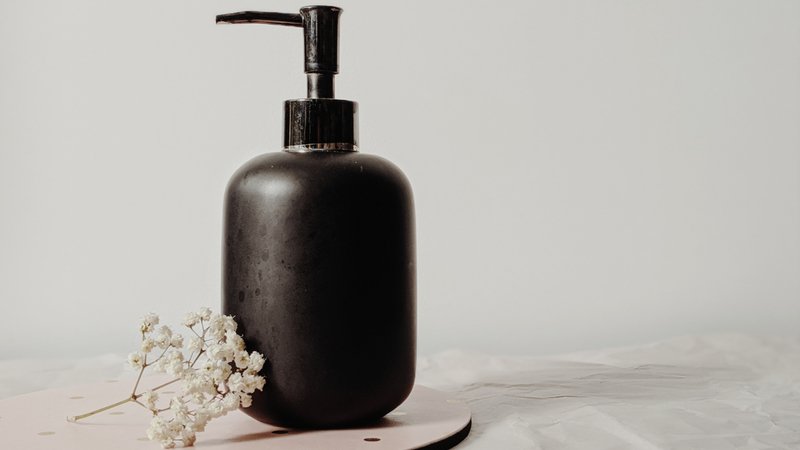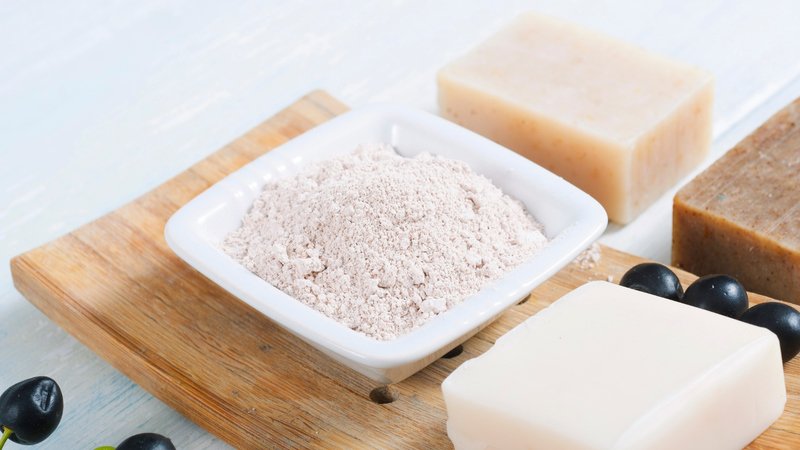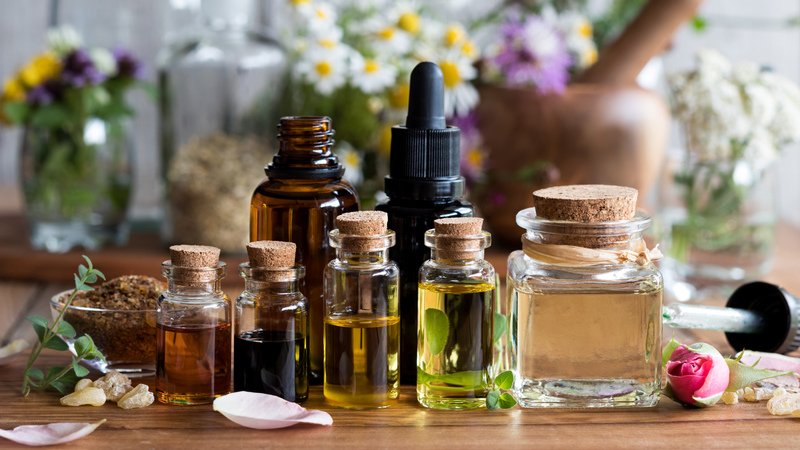Soap is a common hygiene product, accompanying us on a daily basis and helping us to maintain health and cleanliness. It has been used for thousands of years as a washing and cleaning agent. Technological progress made in the 19th and 20th centuries resulted in reduced prices and increased popularity, which is maintained to this day.

What are soaps? How can they be obtained? What substances are needed for their production? Learn all this and more in the article.
Soaps are considered to be higher fatty acid salts. They are obtained on an industrial scale through the saponification of animal fats or vegetable oils with the use of hydroxides. As a result of this process, apart from the soap proper, glycerol is also formed, which has additional moisturising properties.
They are built of a ‘head’, which is hydrophilic – which means soluble in water – and a ‘tail’, which is hydrophobic – insoluble in water. Such compounds, when dissolved in water, organise themselves at the water-air interface in a characteristic manner, i.e. the ‘heads’ towards water and ‘tails’ towards the air. Once the entire surface is filled, further increasing the soap concentration leads to the formation of characteristic structures, termed micelles. Due to their amphiphilic structure, soap in the form of micelles has the ability to interact with fatty particles by means of its hydrophobic part (the ‘tail’), while the hydrophilic part (the ‘head’) turns the opposite way, i.e. towards the aqueous phase. Thanks to this, any greasy impurities are removed from the surface to be cleaned, and consequently are easily removed from the water bath.
Nowadays store shelves offer a wide range of different types of soaps. They can be divided in terms of the hydroxide used (sodium, potassium, magnesium, lithium, aluminium). The alkaline metal used affects the final properties and functions of the soap. Another division includes the consistency of the product and the pH of its aqueous solutions.

Raw materials for soap production
Soaps used on a daily basis contain numerous chemical compounds. These include oils, solvents, essential oils, pigments, emulsifiers, surfactants, stabilizers, thickeners, preservatives and foaming substances. Many are considered to have harmful effect on live organisms. Is this true? Let’s take a closer look.
Mineral oils – soft and smooth skin
Mineral oils perform the function of emollients, meaning that they have good oiling properties, thanks to which the skin is softer and smoother. They are perfect for dry or sensitive complexions. Furthermore, they are highly stable, acting only superficially. This group includes paraffin oil and petroleum jelly.
These are the products of crude oil distillation, which is first thoroughly purified. They have a moisturising effect and are used by those with atopic dermatitis or allergies. Mineral oils are also erroneously believed to have a toxic effect on the skin and that they are accumulated in the internal organs, such as the kidneys and liver. However, it should be borne in mind that every raw material must undergo a safety assessment. If such opinions were scientifically confirmed, then such substances would not be approved for use in cosmetics. Furthermore, mineral oils have been used in soap production for many years, thanks to which their toxicological properties are well known.
Pigments – a splash of colour
The soaps on the market are available in different colours – from snow white through bright and colourful shades to some very dark ones. They are made with pigments, which are marked with Color Index (CI symbol) and the corresponding number in the ingredient list of the soap. The available pigments can be either natural (made from plant material; symbols from CI 75100 to CI 77947) or synthetic. Typically, they appear at the end of the product ingredient list, meaning that they are used in small amounts. They can occur in the form of powder – as matte and pearl pigments. Pearl pigments are created based on mica plates, which are pulverized minerals containing additives in the form of oxides, e.g. iron or titanium oxides.

Essential oils – the magic of memories
Similarly to pigments, soaps may also contain different essential oils. Natural essential oils are available, as well as more synthetic scent compositions, the latter often used by individuals allergic to plant extracts. The world of scents brings back our memories, affects our mood and feelings, and thus make such a popular additive for cosmetics, including soaps. The scents typically added to soaps are: citrus, flowers, musk, wood as well as spice. Soap ingredients also include allergens, which are present in natural oils as well as scent compositions. They are not harmful and nothing to be afraid of. It is only information for people who are allergic to a given allergen, showing that the given product is not suitable for them. People with allergies typically use unscented soaps.
Preservatives – to combat pathogenic microbes
Soaps contain water, which is a natural environment for the growth of microorganisms. For this reason, preservatives are used to protect a product against the appearance and proliferation of bacteria, fungi or moulds. In this manner the product shelf life can be prolonged. Without the proper product preservation it is possible that pathogenic microorganisms could proliferate, which would have a negative effect on our health. The use of preservatives is strictly controlled by the law. Lists of approved preservatives, which were subject to safety assessments, are available. One example group of such compounds are the parabenes.
SLS (Sodium Lauryl Sulfate) and SLES (Sodium Laureth Sulfate) – facts and myths
These compounds are characterized by very good foam formation and cleansing properties. They fulfil the role of emulsifiers in products. Numerous myths have arisen around these compounds. One of such myths concerns their carcinogenic effect and accumulation in the systemic tissues. However, no studies or scientific publications are available that confirm these allegations, and all the data is based on unreliable sources.
Their irritating effect on the skin is an equally common conviction. This could happen if they were used singularly in the form of an aquatic solution, without the addition of other substances, nullifying their irritating nature. Such an effect could also occur if they were used in excessive concentrations or in the case of exposing skin to prolonged contact with these compounds. For this reason they are always used in the form of a compound mix. SLES is characterized by a lower irritating effect than SLS and is more frequently used in personal hygiene products.
The PCC Group offer includes such products as SULFOROKAnole, which is Sodium Laureth Sulfate (SLES), and ROSULfans, which include Sodium Lauryl Sulfate (SLS). They aid the washing of contaminants from the skin and hair surfaces, facilitating mixing water with fatty substances and soil. They are among the best studied surfactants, and have already been used in cosmetics for several decades.
Substances that contribute to alleviating the irritating effects of such chemicals as SLS and SLES include betaines. They are classified among the amphoteric surfactants. In addition they have thickening and foaming properties.
Thickeners – the perfect consistency
This is an important group of chemical compounds, used in cosmetic formulations. It enables the reduction of the sodium chloride content in soaps and to obtain a final product having the required consistency. One such compound characterized by the above properties is ROKAmid KAD, which is Cocamide DEA, available in the PCC Group product range. It improves the consistency of soap by forming what are known as mixed micelles. Furthermore, it is easily biodegradable and it is characterized by high performance, thanks to which it is efficient even at low concentrations.
pH reducing substances – for sensitive skin
Soap solutions with a basic pH may have a negative impact on human skin, which has a slightly acidic nature. Their use may lead to drying and irritation. In this case pH reducers are added to soap. Such soaps are mainly used by people with sensitive skin.
Solvents – the basis for soaps
These constitute an important group of compounds necessary to produce soap. They are used to dissolve other raw materials contained in personal hygiene products. Chemical substances classified as solvents are: water, glycerine, ethanol and glycols.

What is the difference between natural and ‘traditional’ soaps?
Recently a growing trend has been observed for creating natural cosmetics. The production of natural soap by small, local companies is also becoming an increasingly popular and valued craft.
The composition of natural soap is based on saponified oils, and also includes natural pigments and essential oils as well as other herbal additives to improve further care properties.
The soap production process aims to achieve the most natural product possible with valuable properties, and is based upon the cold method. This consists of mixing oils at a lower temperature. It is a simple, yet time-consuming process.
Natural soap production is based on vegetable or animal fats. Nowadays soap masses based on vegetable fats are becoming increasingly popular. Their variety is immense, which enables manufacturers to obtain products with the desired functions and hardnesses. Depending on which oil or butter is used, it is possible to obtain a soap with care, cleaning, foam forming, as well as nourishing properties.
Division of fats used in natural soaps
Fats can be divided into hard and soft. Soft oils take a liquid form at room temperature, whereas hard oils remain solid.
Some typical examples of a hard oils are:
- Coconut oil
This is one of the most popular oils, and is used in many cosmetic products. It is not susceptible to high temperatures, thus retaining its primary, valuable properties. It gives products pronounced foam forming, care, moisturising, antibacterial, disinfecting and antifungal properties. What is more, it has regenerating and nourishing effects on the epidermis. However it should be borne in mind that its content may not exceed 50%, otherwise it can dry out the skin.
- Shea butter
This gives soaps certain moisturising and care properties as well as a pleasant, creamy consistency. It also contains vitamins A and E, thanks to which the skin is more flexible and the ageing process is slowed down through a process of reconstructing and inhibiting skin tissue break-up. Similarly to coconut oil, it should not be used in excessive amounts. In this case its excess use may result in considerable reduction of foam formation and a soap consistency that is too soft.
- Cocoa butter
This contains antioxidants. Its antioxidative effect contributes to the slowing of the skin ageing process. It also has nourishing, soothing and anti-inflammatory effects, thanks to which it can be used by people with problematic skin.
Some examples of a soft oil are:
- Olive oil
This is one of the first fats used as a raw material in soap production. It lacks strong foam forming properties. However, it is classified among the fats that give soaps their care, moisturising and nourishing properties. Furthermore it acts like a filter, protecting skin against the negative effects of UV radiation. It also contains a set of vitamins in its structure. One of these is vitamin F, thanks to which the skin is not exposed to excessive moisture loss, thus protecting it against drying.
- Rapeseed oil
This provides soap with moisturising, nourishing, antibacterial and antifungal properties. In addition, it contains vitamin E, which scavenges free radicals, fulfilling the role of antioxidant. Because of these properties, this fat is often used in soaps intended for people with skin problems.
As you can see, thanks to the availability of a wide range of fats, you can obtain soaps with the desired properties. However, there are some other aspects which affect the final product. An important element are the proportions of oils used relative to the hydroxides, or fat combinations. Soaps typically do not contain a single fat but a mixture of selected oils and butters, so as to maximize the desired effects of the end product.
Natural essential oils
Moreover, fragrances in the form of natural essential oils are added to natural soaps. These are strongly concentrated substances characterized by high volatility and poor water solubility. They are obtained from vegetable raw materials through a process of distillation, fruit peel centrifuging, pressing or extraction. Apart from providing soaps with a delicate aroma, they also exhibit antibacterial, antiviral and anti-ageing effects. Essential oils with variable scents and properties are available on the market. The most popular are: citrus, spicy and flower oils.

Natural pigments
Apart from the oil base and essential oils, the composition of natural soap also includes pigments. Without them the obtained soap typically attains a creamy colour. Depending on the oil used, it may be a lighter or darker shade. Natural pigments which alter the colour of the product include such substances as: chlorophyll, carotenoids, activated carbon, anthocyanins, curcumin and spirulin. Apart from changing the product colour, they constitute sources of additional, valuable nutrients.
Glycerine – a side product of fat saponification
Take a look whether soap contents include natural glycerine. It is a by-product of fat saponification. Without this chemical compound, soap would not have its skin moisturising and conditioning properties.
These substances are not all chemical compounds used as raw materials for soap production. Soaps can include other, different substances, intended to give the products with unique character, e.g. goat milk, honey and even chestnuts.

Safety of cosmetics
The soap manufacturer is responsible for providing a tested and fully safe product. Before a cosmetic is approved for marketing, it must undergo a range of safety assessments and be subject to the standards set out by the European Union. Regardless of whether it is classified among natural or synthetic products. During the safety assessment, irritating properties are tested, for example. Therefore you should not be afraid of the composition of soaps available on the market, because they have to meet legal regulations and they pose no hazard to human health when used as intended.
The PCC Group’s product portfolio includes the ROKO Hygiene line, with a range of liquid soaps and foam soaps. They are subject to the Cosmetic Product Safety Assessment and have been registered in the European Cosmetic Product Notification Portal (CPNP).
- Zieliński R., Surfaktanty: budowa, właściwości, zastosowania, Poznań 2013, wyd. 2
- Hejwowska S., Marcinkowski R., Chemia organiczna, Gdynia 2005
- Michael Willcox: Soap. W: Poucher’s Perfumes, Cosmetics and Soaps. Hilda Butler (red.). Wyd. 10. Dordrecht: Springer, 2000, s. 453
- Willcox, Michael (2000). "Soap". In Hilda Butler (ed.). Poucher's Perfumes, Cosmetics and Soaps (10th ed.). Dordrecht: Kluwer Academic Publishers. p. 453
